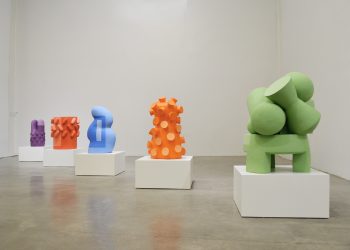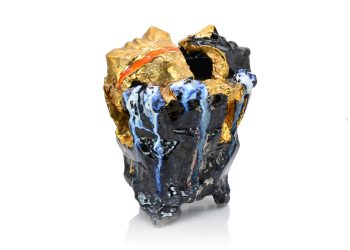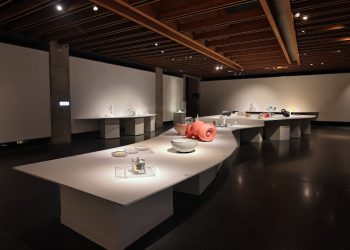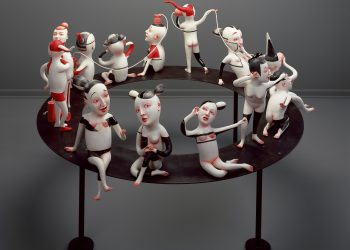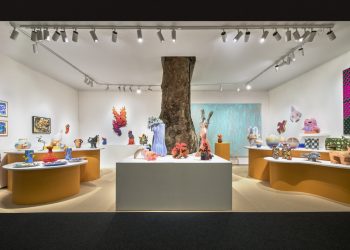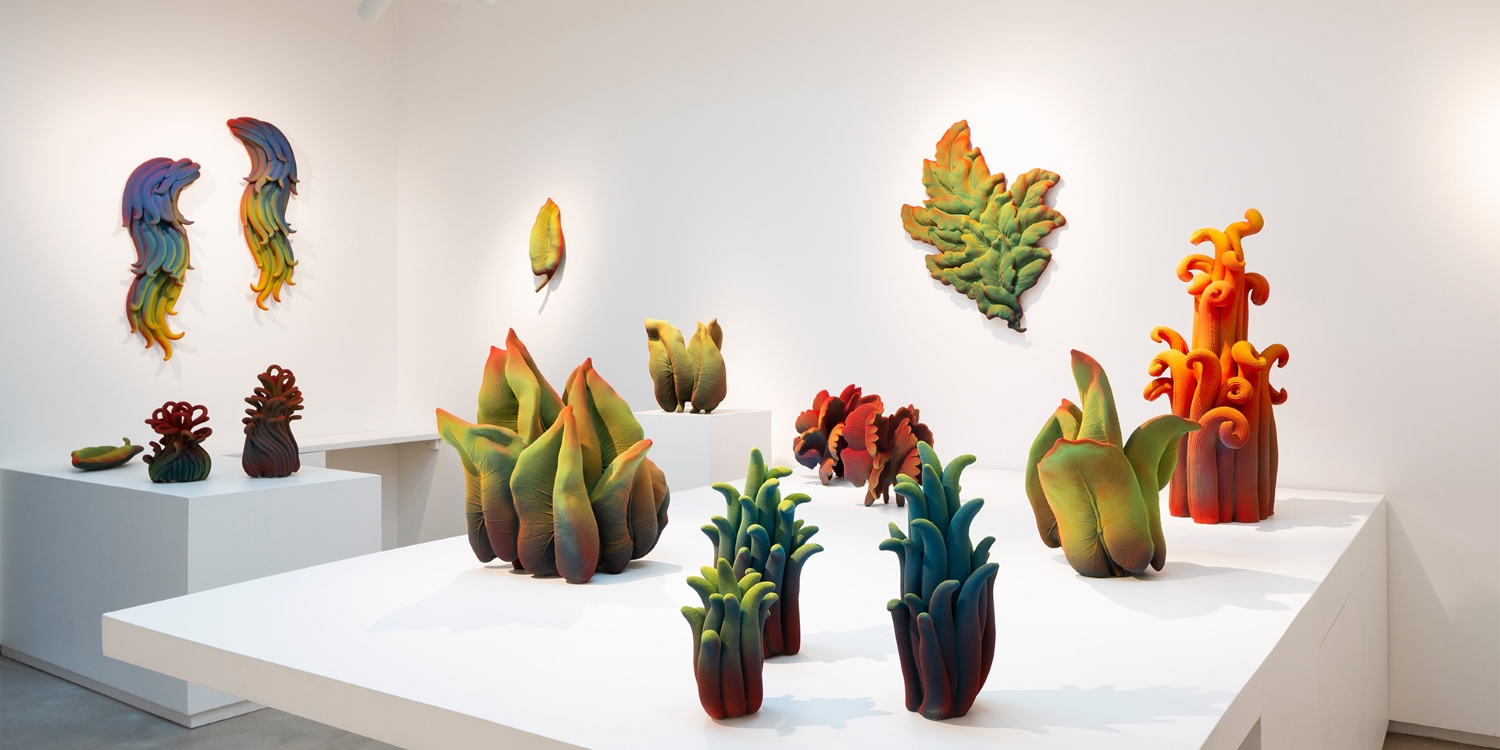
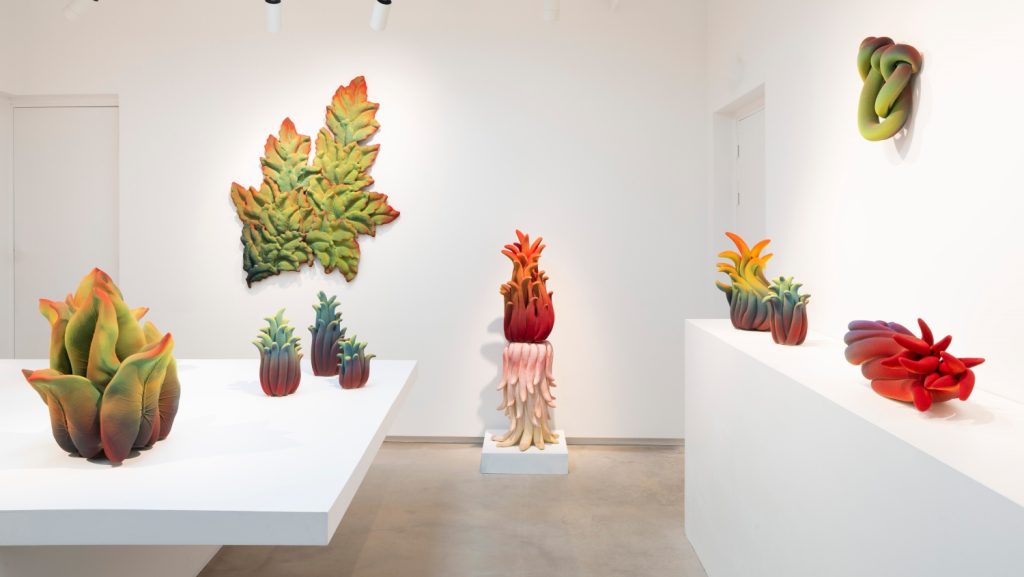
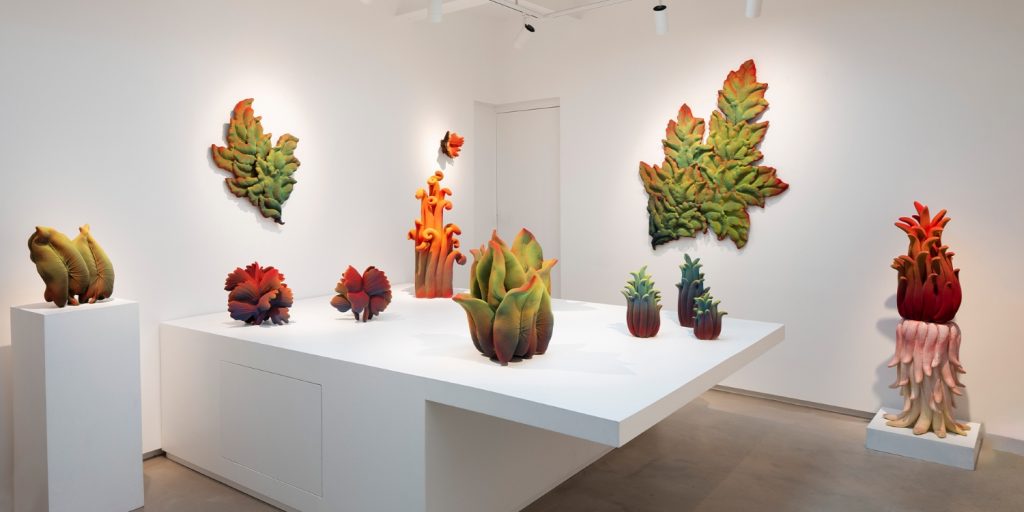

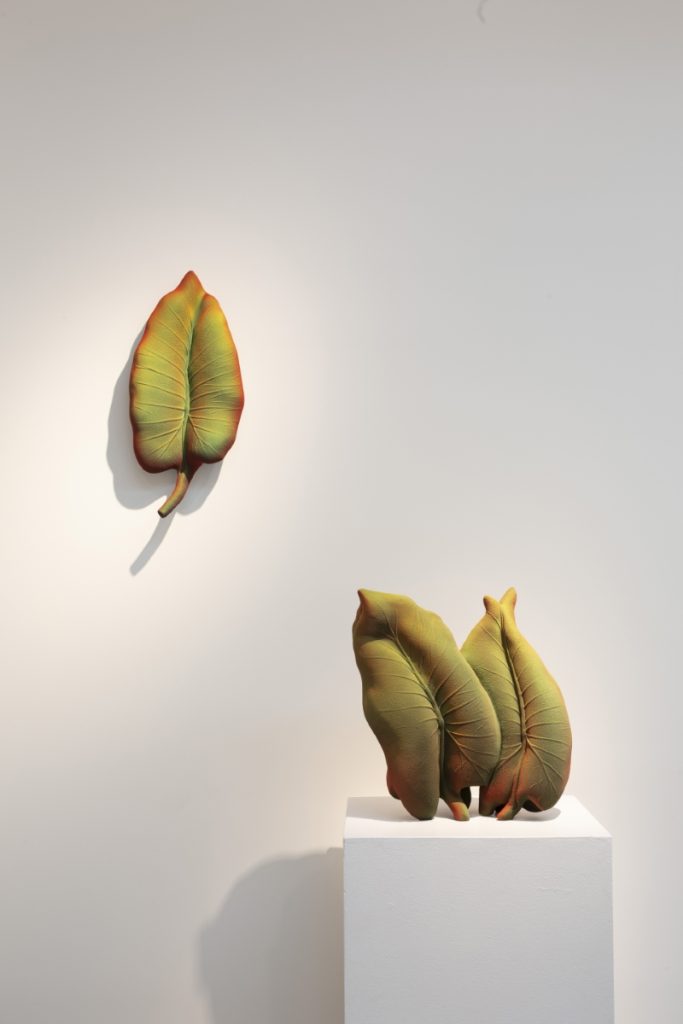
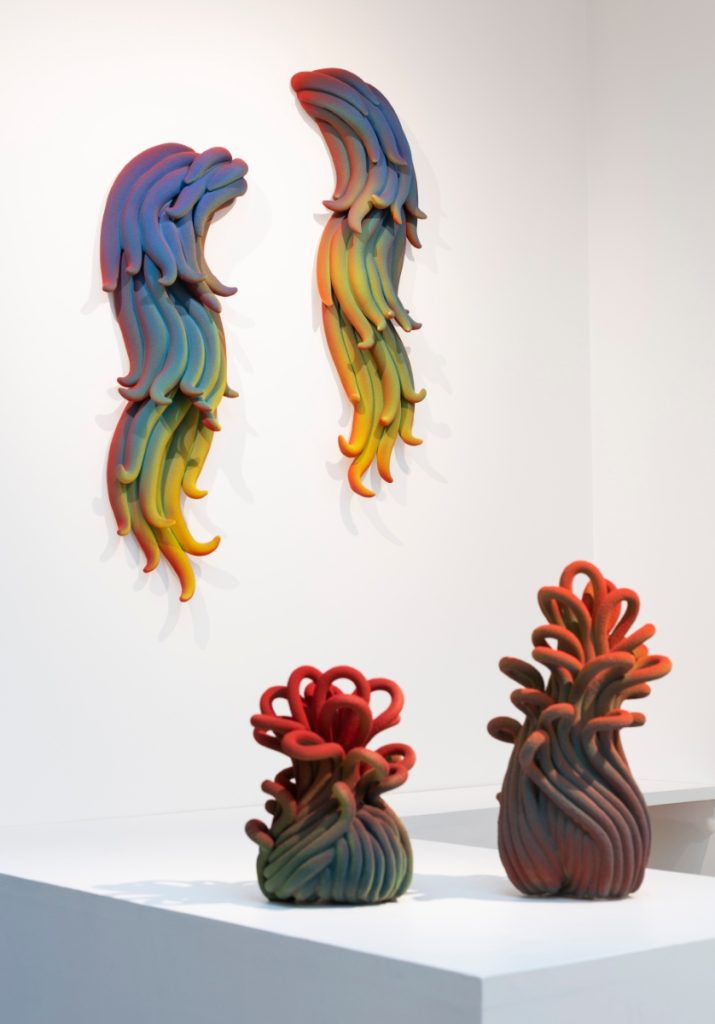
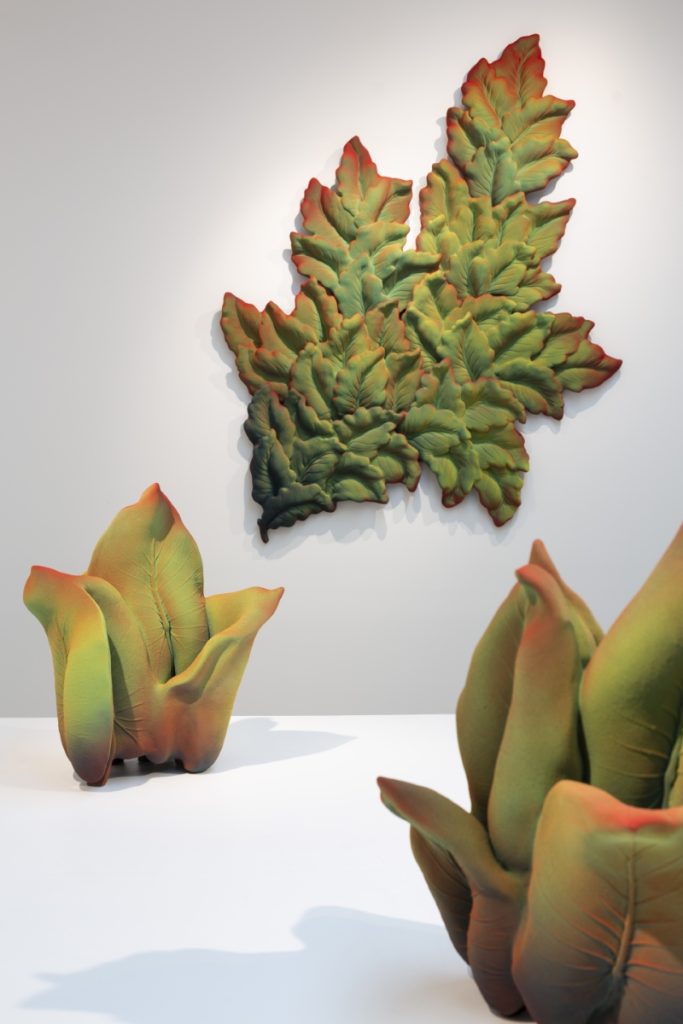
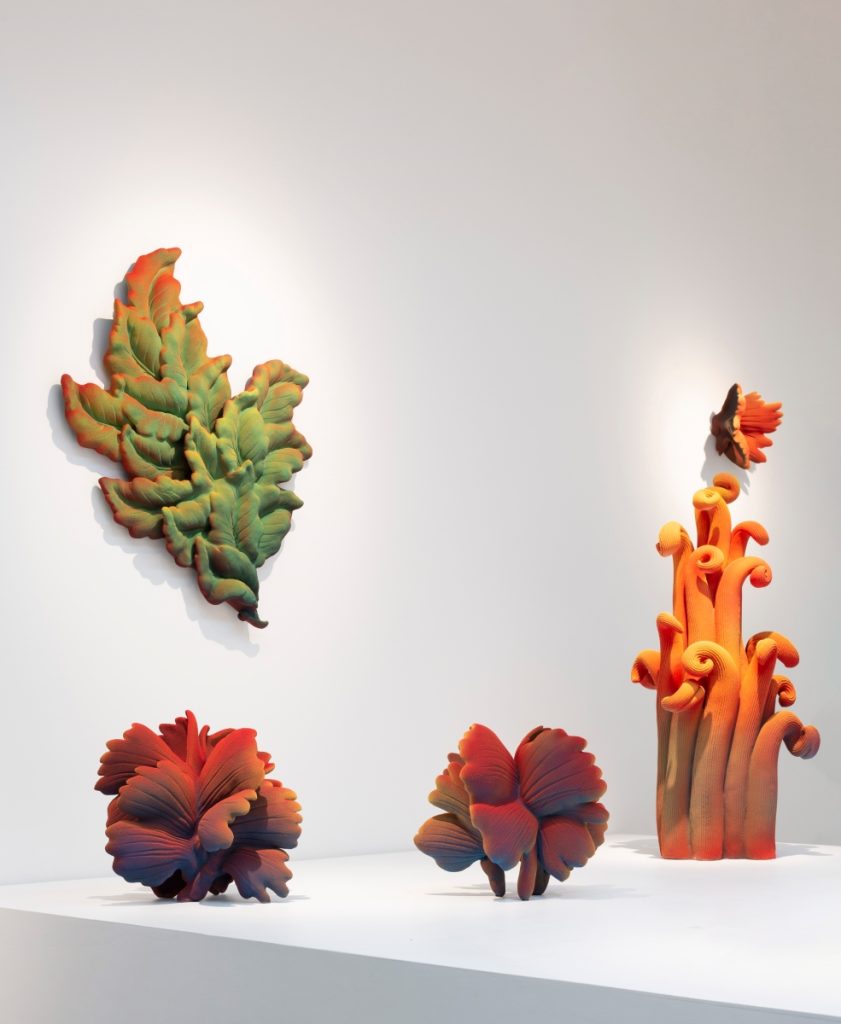
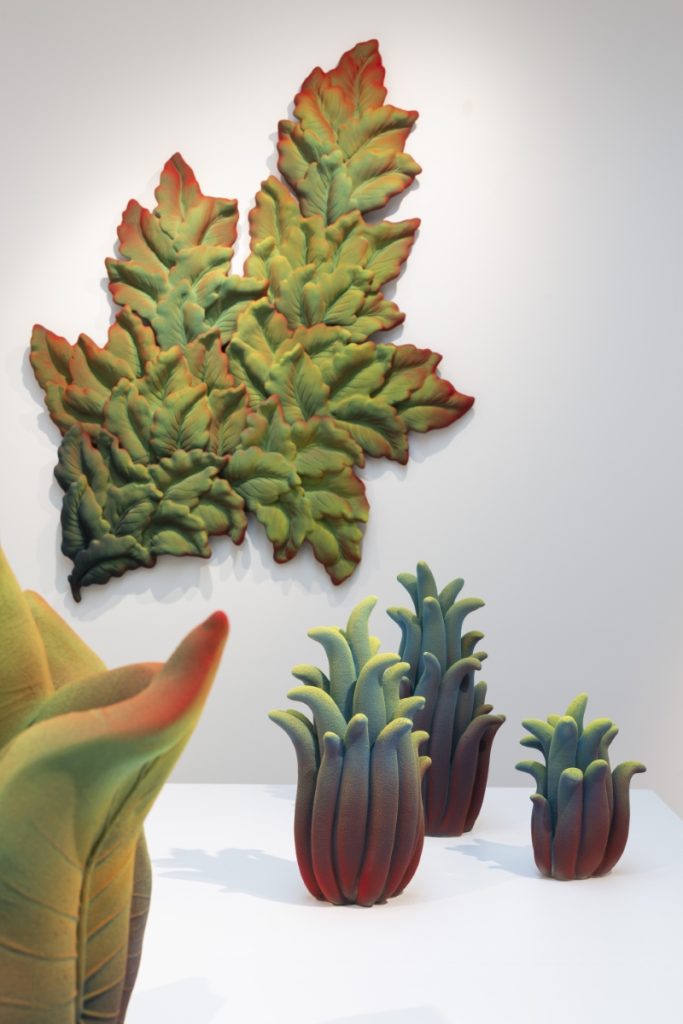
Claire Lindner: Trees have wings is on view at Galerie Daguet-Bresson, Paris
March 14 – May 4, 2024
Daguet-Bresson presents a solo exhibition of the French artist Claire Lindner in Paris. Today, a key figure in Contemporary Ceramics, Claire Lindner, marks her time with the current aesthetic of her works.
Entanglements, intertwining, knots, bloomings and blossomings, foliage, and even tufts—Claire Lindner’s works unfold in the vegetal, mineral, and sometimes almost animal register. At the borders of life, her work explores strengths and possibilities of growth. Covered with an intriguing, powdery texture similar to velvet, they challenge our perception of matter and manipulate the senses. Only a few of us can resist touching this seemingly soft surface with our fingertips, which nevertheless turns out to be rough, revealing its gravity.
The French artist produces sculptures that have entered collections worldwide and now occupy the minds of the finest connoisseurs of the art of ceramics. The “Ceramics Now” exhibitions in Paris, “Formes Vivantes” at the National Manufacture and Museum in Sèvres, and “Contre Nature” at the MO.CO in Montpellier, or “Toucher Terre” at the Villa Datris Foundation in L’Isle-sur-la-Sorgue in 2022, made Claire Lindner a significant artist on the contemporary scene.
Finalist for the LOEWE FOUNDATION Craft Prize 2023, her piece Buisson n°2 is exhibited for the event at the Noguchi Museum in New York. In June 2023, the artist created a series of new works unveiled by the Théodore Deck Museum as part of a monographic exhibition.
New, mysterious, hypnotizing, and subtly colorful, Claire Lindner’s aesthetic has left its mark on contemporary art and makes this French artist an essential reference in the art of 21st-century ceramics.
Introduction by Etienne Tornier
Monstrosities of an artificial paradise or disturbing outsized protuberances, whatever they are, we are captive; impossible to divert attention, to miss it. Like the colorful dances of Loïe Fuller, the ceramics of Claire Lindner are hypnotizing. They reveal what we do not seek to observe, show what we cannot see.
Without bodies and without branches, these autonomous appendages stand up as if they were endowed with their own force, with a singular vital force.
“the leaves are the plant: trunk and roots are parts of the leaf, the base of the leaf, the simple extension by which the leaves, while remaining high in the air, support themselves and obtain nourishment from the ground . […] It is the leaf that produces the plant. » Goethe, The Metamorphosis of Plants, 1831
Echoing Goethe’s vision, Claire Lindner’s pieces play on a form of synecdoche, where a part embodies a whole. Assembled, the leaves form bushes that one would readily call fiery, their colors are devilishly shimmering. The repetition and assembly of the same form creates a new one, which each person will seek to qualify according to their unconscious.
The wings are captured in full movement and are assembled together in such a way that we believe we see the decomposition of the effort, the diffraction of the initial momentum. We think of the chronophotographs of Etienne-Jules Marey (1830-1904), who was so interested in the flight of birds, in the frequency of wing movements, their successive positions and the driving force which supports and transports the body of the animal. Claire’s wingbeats also recall certain sculptures by the Italian Futurists from the early 1910s, who sought to capture movement and speed.
The colorful vibration of the slips and sprayed glazes contributes as much to the impression of movement, of a potential becoming, as to the sensation of an inner alchemy, of a change of state in the process of occurring. Boiling sap, imminent gush? Leaves have this natural propensity to capture the sun’s rays on as much of their surface as possible. This heliotropism makes it the main vector of photosynthesis, the fabulous transformation of light energy into chemical energy which contributes to the life of the plant and by extension to all life on earth.
In this common universe of undulations and colors, everything seems equivalent: the more we observe them, the more our mind risks making chimerical associations. It is the same life that animates all these excrescences, marine, animal and plant. These turgid leaves, wings and fins invite us to observe living things as a common manifestation and take us back to a temporality that goes beyond us.
Etienne Tornier, Responsible of Collections at the Museum of Decorative Arts Bordeaux
Contact
hello@daguetbresson.art
Galerie Daguet-Bresson
16 rue de l’arcade
75008 Paris
France
Photos by David Bordes




